Elba, Italy
Elba is a Mediterranean island in Tuscany, Italy, 10 kilometres from
the coastal town of Piombino, the largest island of the Tuscan
Archipelago. It is located in the Tyrrhenian Sea, about 50 kilometres
east of the French island of Corsica. The island is part of the
province of Livorno and is divided into eight municipalities, with a
total population of about 30,000 inhabitants, which increases
considerably during the summer.
Everyone who gets sent to exile should be as lucky as France’s Emperor.
Napoleon Bonaparte might have been irritated that his empire was being
stolen out from under him, but he still managed to make the most of his
eight months and 22 days on the island of Elba, a bucolic slice of
Mediterranean paradise off the northwest coast of Italy.
Elba is the largest remaining stretch of land from the ancient tract
that once connected the Italian peninsula to Corsica. The northern
coast faces the Ligurian Sea, the eastern coast the Piombino Channel,
the southern coast the Tyrrhenian Sea, and the Corsica Channel divides
the western tip of the island from neighbouring Corsica. The island
itself is made up of slices of rocks which once formed part of the
ancient Tethyan seafloor.
The legend is that Venus’ necklace broke, dropping her jewels into the
sea, and one of those jewels became Elba. This island, just 224 square
kilometers (86.5 square miles), has attracted and been governed by the
Lugurians, Greeks, Etruscans, Romans, Spanish and finally, Italy. The
mountain regions had been rich in iron ore that, once mined, was
smelted by fires so numerous that the Greeks named the island Aethalia,
which means “spark.”
The cruise ship dock is in the middle of town at the bottom of the
Fortezze Medicee. To the left, as you leave your ship, is the central
business district and ferry docks; to the right, as you round the
bottom of the Fortezze, is the marina with the yachts and upscale
shops.
The local currency is the euro – the U.S. dollars are not accepted.
There is a bank on Calata Italia (which fronts the port) just past the
first ferry dock (Pontile com. TE G. Massimo) if you are going to use
an ATM; there is a change office on the same street just before the
ferry dock if you want to change dollars or pounds to euros, and there
is a post office (to change traveler’s checks, which banks won’t touch)
above the marina on G. Gasribaldi near the Piazza della Repubblica.
Be aware that Elba is part of Italy, not France, so Italian is the
language. Very little English is spoken here, however if you plan on
venturing beyond the organised tours. If you intend arriving in Elba
from the European mainland, the island is connected to the mainland via
the four ferry companies, Toremar, Moby Lines, Blunavy and Corsica
Ferries – Sardinia Ferries, all offering routes between Piombino and
Portoferraio, the capital located in the north, Cavo, Rio Marina and
Porto Azzurro, on the east coast of the island. There is an airport on
the island, Marina di Campo Airport. It is served by SkyWork Airlines
and Silver Air with flights to Italian mainland and Switzerland.
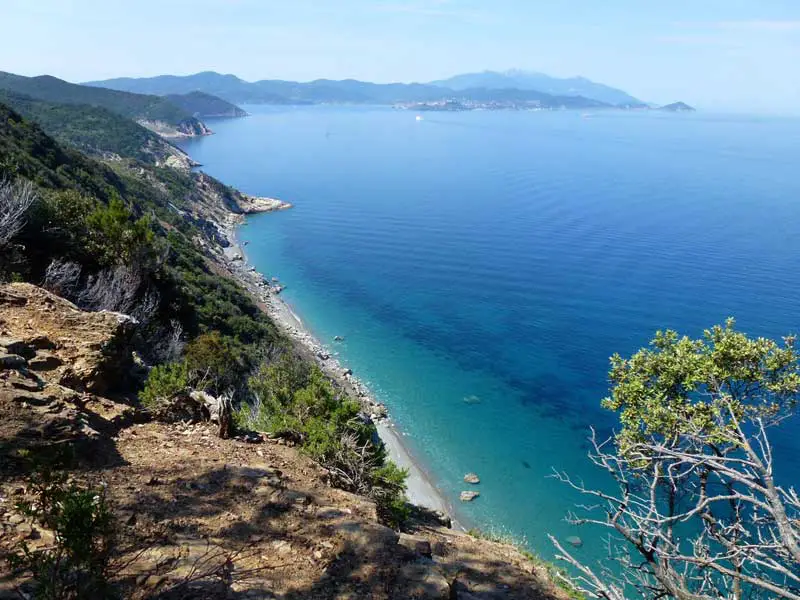
Plan and Book:



Overview
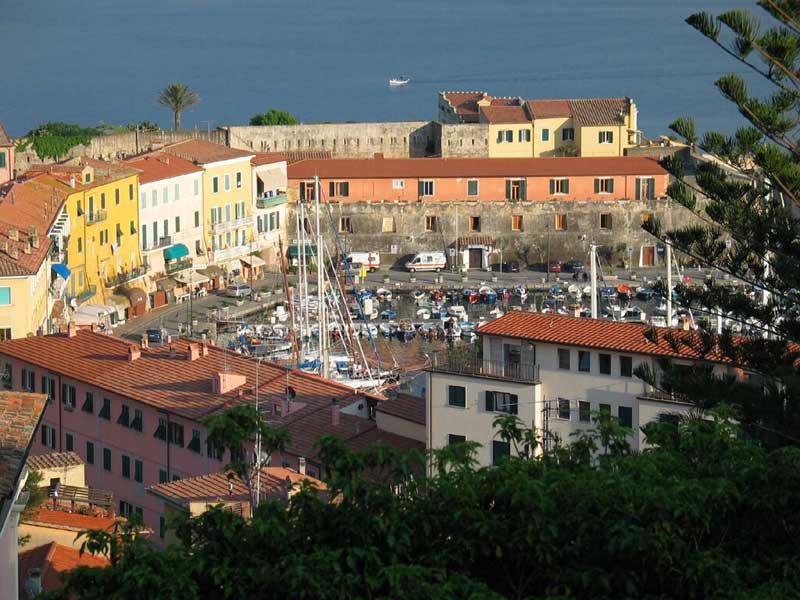
Porto Ferraio, the largest city and biggest port on Elba, is located
in a protected harbour, which makes it an ideal haven for yachtsmen
from all over the Mediterranean. And indeed, the marina area is rich in
shops and cafes that cater to the sailors who convene here. But long
before this, Admiral Nelson called Porto Ferraio the “safest port in
the world” because of the way it’s surrounded by bluffs with
exceptional sightlines; the Greeks believed it was the port of call of
the Argonauts and named it Argoos.
This is a charming port stop for smaller ships; you won’t find
mass-market behemoths disgorging their guests onto these shores. The
fact that it’s small and easily negotiable on foot make it an ideal day
out for those who enjoy simple pleasures. And for those who choose to
explore more of the island of Elba, well, that’s easily accomplished as
well.
If you’re going to spend your time in Porto Ferraio, almost all of it
is accessible on foot. The climb to Napoleon’s city house and to the
fortresses can be difficult for those with mobility problems, but there
are plenty of taxis. There are also tourist vans that do a tour of the
city and surrounding areas, and during the summer, from the end of May
to the end of August, there’s a little tourist train (on wheels) that
offers a series of different sightseeing tours from two to four euros.
All options are easily accessed from the parking lot in front of the
ship’s dock.
Just adjacent to the ship’s dock is a cafe bar, a nice place to stop
for a coffee. It’s located in the parking lot adjacent to the dock.
Across the street is a large bakery/gelatteria where you can grab a
sweet bite and watch the maritime activity, including all the ferries
coming and going to and from the mainland. There’s also a little
dockfront square with nice benches; its breezy location is lovely on a
hot summer’s day.
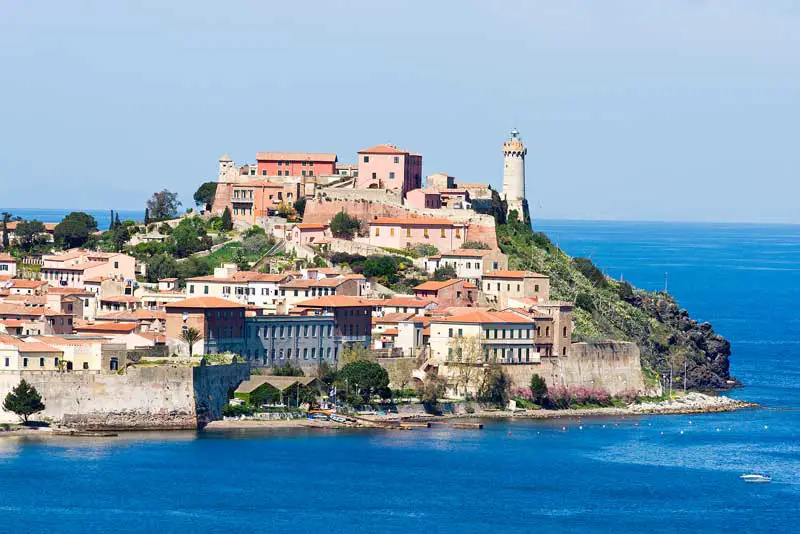
Attractions and Activities
Fortezze Medicee: When construction was started on this stunning
crenellated fortress in the mid-1500’s, Elba was under the governance
of Spain, and the structure was built for the behest Cosimo I, Grand
Duke of Tuscany, with the blessing of King Charles V. The fort proved
its worth in 1553 when, sent by the French to try to capture Elba, the
Turkish pirate Dracut decided that the port was impenetrable and
departed.
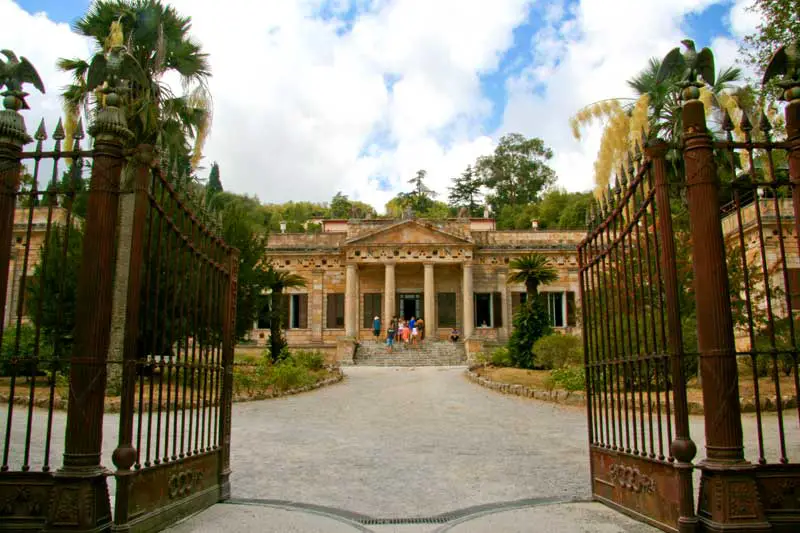
Villa dei Mulini: (Napoleon’s Palace, Phone: 0565-915846) When
Napoleon Bonaparte was exiled to sleepy little Elba in 1814 (when the
island “belonged” to France), he certainly made the most of his
“imprisonment.” Of course he didn’t realize that he wouldn’t be staying
long, so he built an elaborate villa above the city, near Fort Stella,
using a simple Tuscan structure as its base. Most of it is unchanged
from his stay, with artifacts such as art works, furniture and
documents preserved for public viewing. Closed Tuesdays.
Dell’ Open Air Museum Italo Bolano: (Phone: 0565-914570) Elba’s current
favorite son, contemporary artist Bolano, has a gallery/museum in the
“open air” that visitors can wander through. The artist features
paintings, sculptures, ceramics and glass works; of course you can
purchase items as well as gawk at them.
Museo della Misericordia: Located next to the church of the same name,
this important little museum holds, among other things, Napoleon’s
death mask (we’re not sure how it arrived here from Devil’s Island, but
most of the items were donated by Prince Anotolio Demidoff, Napoleon’s
nephew, who was left in charge of many of the French Emperor’s effects).
Villa San Martino: (Phone: 0565-914-688) Napoleon Bonaparte decided
that his palace in Porto Ferraio wasn’t enough, so he also built a
“summer villa” inside an old church. Still standing, and updated by
Prince Demidoff to include his gaudy monograms strewn around, it’s the
cottage in the back where the Emperor really thrived, wrote and
relaxed. The villa is located about two miles south of the city and is
accessible by cab.
Following the Treaty of Fontainebleau, French Emperor Napoleon
Bonaparte was exiled to Elba after his forced abdication in 1814, and
he arrived at Portoferraio on May 30, 1814. He was allowed to keep a
personal guard of six hundred men. He was nominally sovereign of Elba,
although the nearby sea was patrolled by the French and British navies.
During the months that Napoleon stayed on the island, he carried out a
series of economic and social reforms to improve the quality of life,
partly to pass the time and partly out of a genuine concern for the
well-being of the islanders. Napoleon stayed on Elba for 300 days.
Hearing that the Congress of Vienna planned to remove him further from
Europe and that the more popular and reformist Duke of Orleans was
planning to replace his relatives, ruining any chance of Napoleon’s
popular recall, the former emperor escaped on a ship under British
colors to France on February 26, 1815, for the Hundred Days. After his
defeat at Waterloo, he was subsequently exiled again, this time to the
barren and isolated South Atlantic island of Saint Helena.
The island has a network of trails for road racers looking for more
technical routes for their training, trails and dirt roads for bikers
to have fun on, and accessible routes for families with children who
need safe and relaxing routes. On the road from Rio nell’Elba going to
Porto Azzurro is the Fonte di Coppi. Towards the end of his career
Fausto Coppi, the Campionissimo, came here to train on the roads of
Elba. He still retained a celebrity status but was no longer at the
peak of his career that ended with his death a few years later. The
plaque on the fountain reads: “1960–2010, here the champion
quenched his thirst, since fifty years on the run”.
You can relive the ancient history of Elba with wonderful and
inspirational history. For example, take a tour of the Spanish forts of
the XVII Century, which conclude with a special visit to the Cala di
Mola. This fortress was one of the most important in protecting the
island and witnessed many of the wars that took place here. If you
prefer a more beautiful testimony to the Renaissance, you must not miss
a trip to the Medici walls in Portoferraio.
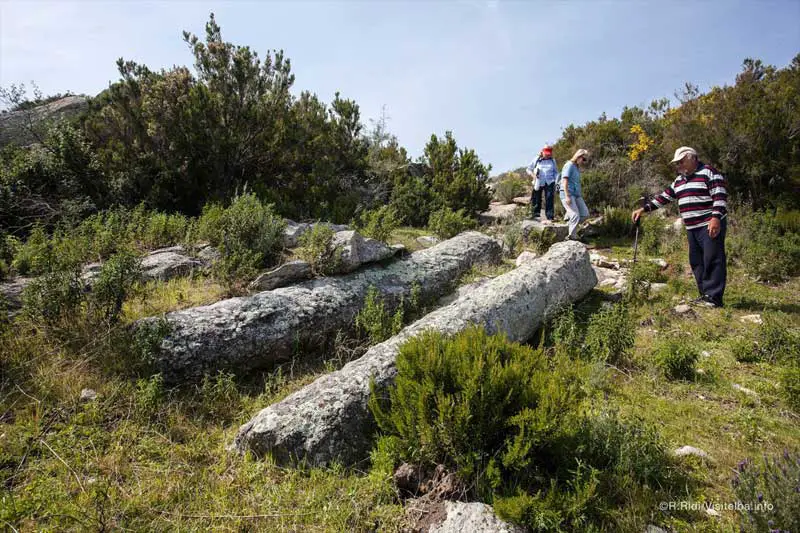
Roman columns of granite at San Piero
You can also take a trip to the Etruscan walls on the coast above
the town of Procchio. Marina di Campo and Portoferrario are also great
locations to indulge in history. Do not forget the Roman villas at
Claudia and the caves of Portoferraio and Agrippa Pianosa. Here, you
will really get a taste of the ancient opulence of the island.
There are many places on the island where you can breathe the art of
Elba. If you take a trip across the Salita Napoleone, the rose stone
staircase in the historic center of Portoferraio, you can reach the
former barracks De Laugier. Today, the barracks have become the
cultural centre that is home to the Pinacoteca Foresiana and its
permanent collection of 800 pieces of artwork. It is also easy, and
wonderful, to get lost in the small villages of the island. They will
give you the opportunity to rediscover the art of Elba and those famous
artists who have made it known worldwide. For example, the legendary –
and bohemian – painters of the Dunes that brought so much good
attention to Elba. They are artists of a different trend and state of
mind who have camped since the 50’s on the wild beach of Procchio. This
stunning beach has continued to give them the desire and inspiration to
represent the splendor that is Elba. At one point, they were even
joined by the great painter De Chirico.
Beaches of Elba
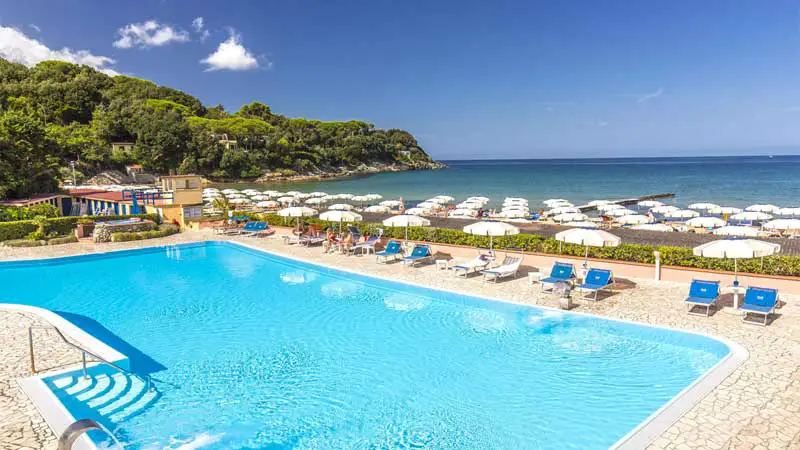
Procchio Beach (Sand) Elba Island: one of the largest and prettiest
beaches on the island, and is divided over three localities: Procchio,
Camp all’Aia, and Guariola on the extreme right, where the gulf closes
in on itself to form an enchanting inlet.
Pomonte Beach (pebble): In the town of Pomonte there are three
beaches within a range of 1 km. In front of one of these (that of
Quartiere), near Ogliera Rock, at a depth of 9 m (plainly visible from
the surface) lies a cargo ship sunk in 1972. Don’t miss a chance to see
the huge wreck, by now the habitat of numerous species of fish.
Lacona Beach (sand): The beach, situated in the gulf of its namesake,
is one of the biggest on the island and is at the disposal of many camp
sites.

Padulella, on the northern side of the Island, is a white pebble
beach, near Le Ghiaie and Capo Bianco, with many facilities and clear
sea. You can get to this beach from two different places, both, however
on the road that goes from Portoferraio to Le Ghiaie, following the
signs for Padulella, Enfola.
La Spiaggiola Beach La Guardiola (Sand): Very popular in the low season
, as the bay is sheltered from the wind, making the outside temperature
is higher than the other beaches is water. The beach has no services ,
but we find the bar / restaurant at the nearby beach of Guardiola at
200m
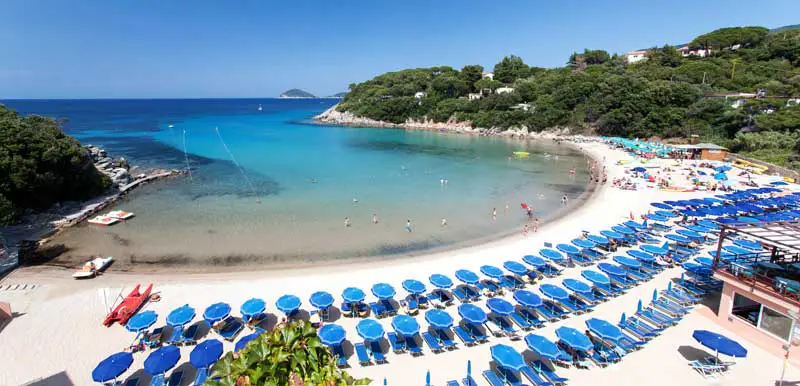
Spartaiai Bay, Portoferraio: it is located in a narrow inlet between the beaches of Procchio and Paolina.
La Sorgente Beach (Pebble): A beautiful and peaceful little white pebble beach that shows off the clarity of the water.
Remaiolo Beach (sand and pebble) Capoliveri: The Remaiolo beach is
located in the vicinity of an old cave, from which Pyrite was
excavated, and which is now a mineral park.
Bagnaia Beach (sand and pebble): The beach is located in the little town in front of Portoferraio Bay.
Fenicia Beach (pebble) Marciana Marina: Fenicia Beach is located to the extreme left of the town.
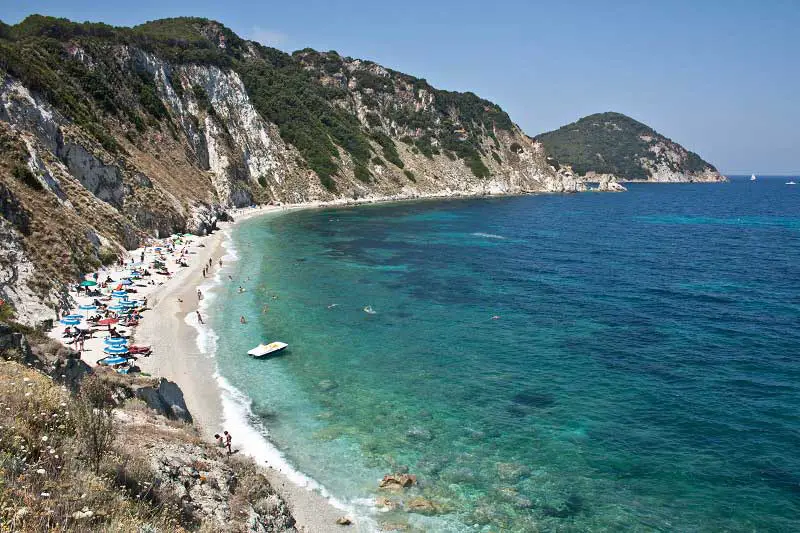
Sansone Beach (Pebble): This white pebble beach is always very
peaceful, perhaps because it isn’t that easy to find. However, it’s
worth while searching it out for the clarity of the water and the peace
that reigns there. The only way to reach it is to get to the Sorgente
Beach area, where a little 200 m street joins in. Sorgente Beach is
located 5 km from Portoferraio and is accessible by a path near the
Enfola-Viticcio crossroad.
Le Viste Beach (Pebble): It is located on the North side of Portoferraio.
The beach FIND within the Private fishing at Scoglietto (little island a few hundred meters in front of the beach) .
This makes it one of the places more attractive rate for snorkeling. It is located on the North side of Portoferraio.
Porticciolo Beach (Sand): A tiny beach located 700 m to the left of Biodola.
Galenzana Beach (Sand – pebble): A very pretty beach and little frequented because it is only accessible by foot.
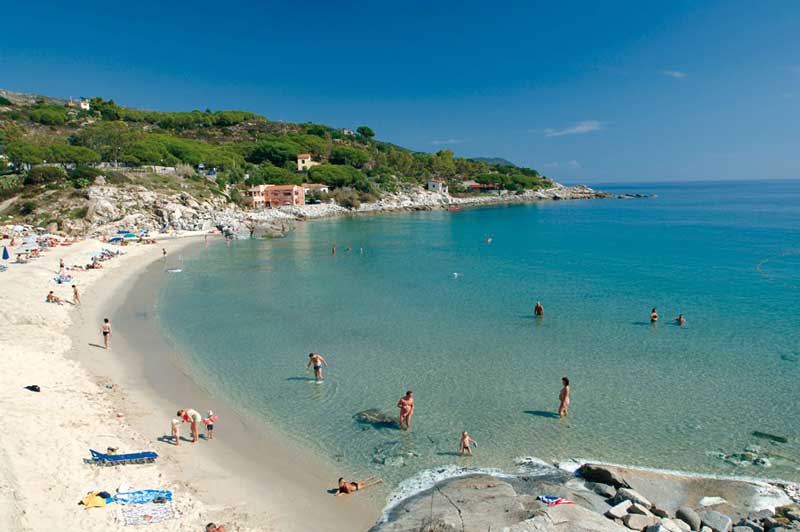
Morcone Beach (sand) Capoliveri: Only a short piece of coast
separates the beautiful beaches of Morcone and Pareti, both
well-equipped for tourism.
Acquaviva Beach (Pebble): It is exposed to the North, and adjacent to
the beach is a camping site: the ideal place for camping enthusiasts.
Ortano Beach (sand and pebble) Rio Marina: The beach is furnished with
numerous services. You can make an excursion to the island of the same
name which is located less than 10 minutes away by pedalo.
Naregno Beach (sand) Capoliveri: A big beach with a lot of
infrastructure, only the long and narrow spur of Cala di Mola separates
it from the town of Porto Azzurro. To the right of the beach, on the
extreme tip of Capo Focardo is the fort of the same name built in 1678.
Design by W3layouts
